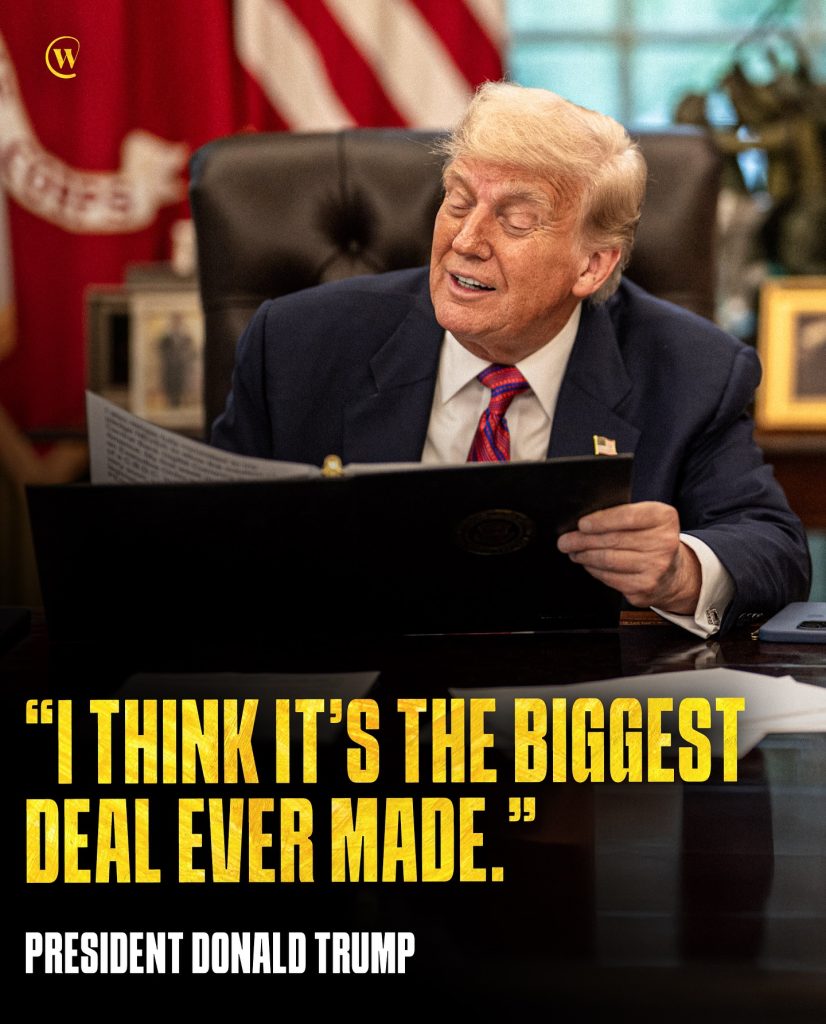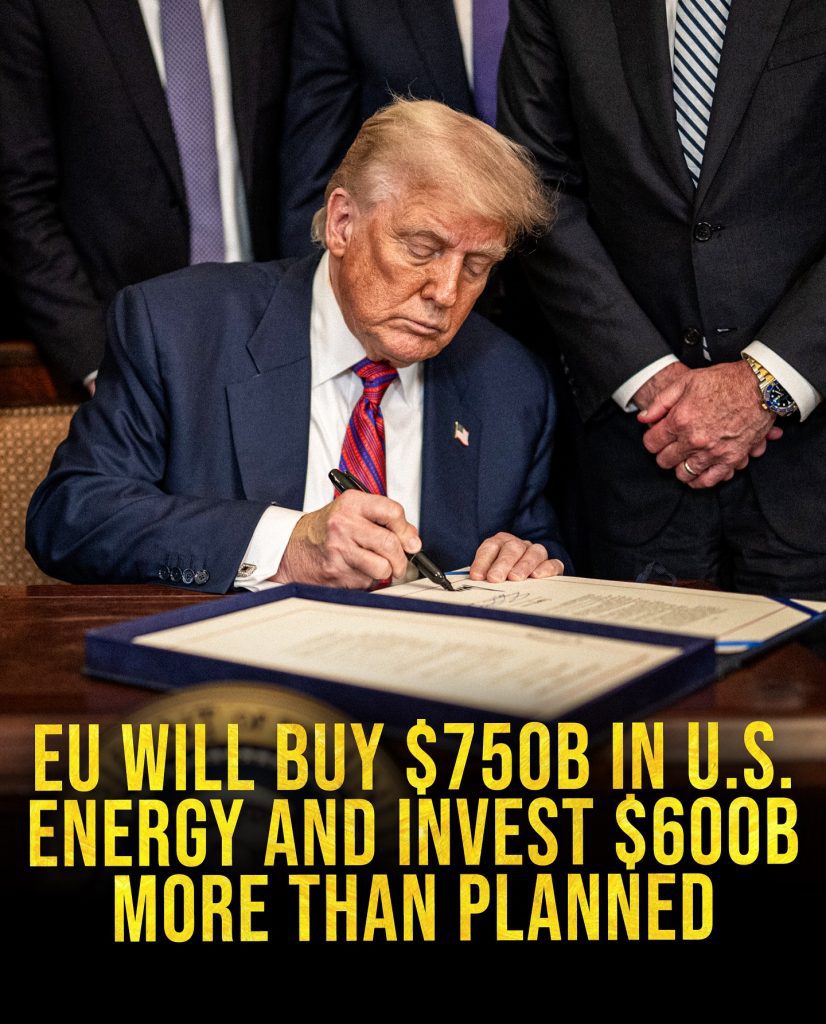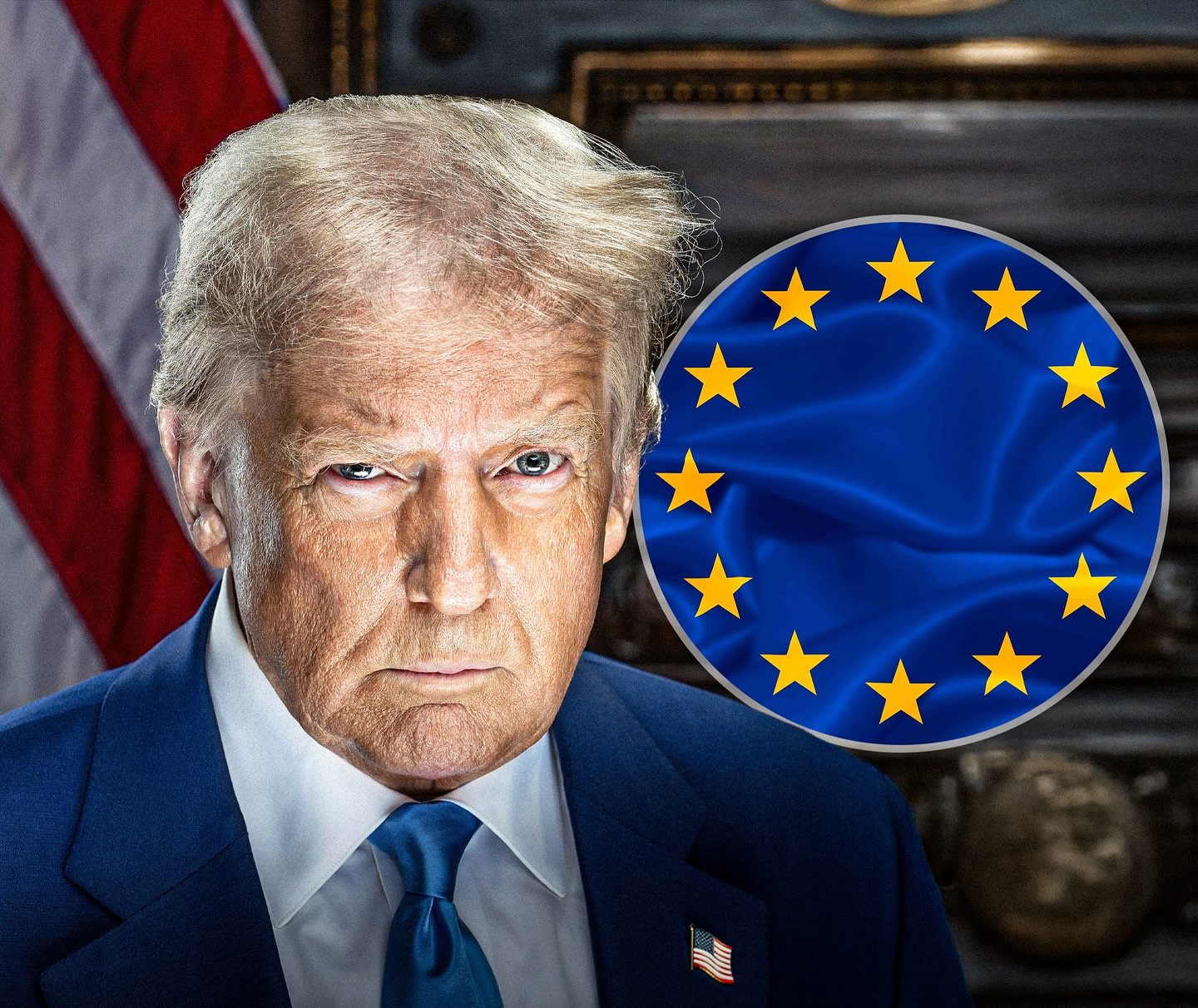PRESIDENT TRUMP SAYS THE U.S. HAS REACHED A TRADE DEAL WITH EUROPE
I woke up to one of those alerts that changes the tone of the whole day: after weeks of brinkmanship, Washington and Brussels said they had a trade deal. It wasn’t announced in a sterile briefing room but after talks in Scotland, where President Donald Trump stood beside European Commission President Ursula von der Leyen and confirmed a framework that sets a 15% U.S. tariff on most European imports—half of the 30% rate that had been threatened for August. In return, Europe pledged to buy vast volumes of American energy and increase investment in U.S. projects. Even before the legal text appears, that outline is big enough to move markets and planning calendars.
The early details were striking and, unusually for a first‑day announcement, fairly consistent in briefings from both sides. The 15% tariff would apply to broad categories—cars, semiconductors, and in some accounts pharmaceuticals—while long‑running steel and aluminum duties remain at 50% for now. Both sides highlighted limited zero‑tariff carve‑outs for strategic items like aircraft components to keep sensitive supply chains from jamming. The through‑line was the same: a headline rate that averts a bigger shock, paired with commitments on energy and capital that tie the economies together over years rather than months.
There was an immediate sense of relief in the way economists and traders reacted. A ceiling of 15% is still a cost, but it is no longer the cliff everyone had modeled. Futures and currencies twitched in the right direction, not because the deal is perfect, but because it replaces a countdown clock with rules that can be penciled into spreadsheets. “Punchy” is how one analyst put it—yet also “half of the 30% they were threatened with.” The tone across the finance desks felt similar: an imperfect truce that steadies nerves.
Of course, this isn’t the last word; it’s the first page. The EU is twenty‑seven member states plus a parliament and a commission, and big promises move through a maze of procedures. On the U.S. side, Congress and industry associations will weigh in on tariff authority and product lists. That’s normal for a package this size. The useful part is that both sides went public with the core pieces: a tariff ceiling, energy purchases, and investment targets. That gives companies something solid enough to plan around while lawyers and engineers translate handshakes into schedules, codes, and enforcement language.
What gives the framework unusual heft is the energy spine. Europe’s promise to buy about $750 billion worth of U.S. energy—liquefied natural gas, oil, and nuclear fuel—takes the post‑Russia re‑wiring of the continent’s energy map and stretches it out over the next decade. For U.S. producers, that’s a green light to invest in capacity with more confidence that the demand will be there; for European utilities and households, it’s an insurance policy against the kinds of shocks the continent lived through after 2022. The headline is simple, but it will become real one contract, one terminal upgrade, and one cargo at a time.
The investment piece tells a similar story on a different channel. European institutions and firms are expected to add roughly $600 billion of investment in the United States, with money likely flowing into energy infrastructure, advanced manufacturing, grid upgrades, and defense‑adjacent supply chains. That’s not a single check; it’s thousands of yes‑or‑no decisions by boards and pension funds, each of which needs clear rules and believable returns. A framework like this doesn’t guarantee those yeses, but it removes one of the biggest reasons to say no—uncertainty about the tariff environment.
“I THINK IT’S THE BIGGEST DEAL EVER MADE.” — PRESIDENT DONALD TRUMP

The split‑screen of the day was memorable. President Trump called it “the biggest deal ever made,” leaning into the superlatives that animate his base. Ursula von der Leyen chose cooler phrasing, describing the 15% rate as “the best we could get” and emphasizing the stability that comes from replacing a 30% threat with a predictable ceiling. Those aren’t contradictions so much as translations for different domestic audiences. If the deal works, it will be because both stories can live side by side without the policy coming apart.
There’s a reason both leaders pushed hard to finish before the August deadline. Had the higher tariffs landed, Europe was ready with counter‑measures, and the U.S. was bracing for blowback across industries that rely on European inputs. Instead, the two sides found an off‑ramp with enough structure to keep supply chains from seizing up. Steel and aluminum remain at 50% for now—politically salient for both sides—and some strategic sectors secured zero‑tariff carve‑outs to protect day‑to‑day operations. It is not a return to pre‑tariff life, but it is a managed environment rather than a brawl.
If you follow trade only at headline level, numbers like 15% or $750 billion can feel abstract. Up close, they are very concrete. A chip etched in Germany might be packaged in Texas, nested in a module in Poland, and installed in a vehicle in Tennessee that runs French software and Japanese sensors. Every hop touches a tariff code and a rule of origin. The uniform ceiling gives importers a figure to model; the carve‑outs keep the most fragile links from snapping. That combination—blunt headline, precise exceptions—is how you keep a policy from accidentally breaking what it meant to protect.
There are honest caveats that deserve to ride shotgun with the excitement. The EU’s big energy promise is still subject to physics and price: cargoes need to be produced, liquefied, shipped, and regasified, and the numbers only hold if long‑term contracts make sense for both sides. The investment pledge will materialize only if rulemaking is clear and returns look credible. And none of this precludes political friction later—steel and aluminum are still unresolved, and sensitive sectors will keep lobbying for tweaks. A framework can bend; the task now is to keep it from buckling.
Still, the tone felt different from recent years. Markets treated this as a de‑escalation: equities had an excuse to rally, the euro found a bid, and executives on both sides of the Atlantic started talking in “if/when” instead of “what if.” That doesn’t make it painless—15% is a tax importers will feel—but it turns a blinking red light into a flashing yellow. In trade, yellow is often the color of relief.
EU WILL BUY $750B IN U.S. ENERGY AND INVEST $600B MORE THAN PLANNED

The numbers that anchor this section—$750 billion in energy purchases and $600 billion in additional investment—carry more weight than a single news cycle. Europe has spent the last few years rewiring its energy system away from Russian supply. A long‑horizon commitment to U.S. fuel makes that shift more durable, and it gives American producers and port operators the confidence to expand. The investment pledge follows the same logic: money flows toward clarity, and a tariff ceiling plus political will can be enough to push projects off drawing boards and into construction. That’s where the macro story becomes a local one, with cranes on the skyline and training programs filling up.
There is also the question of precedent. Only days earlier, Washington rolled out a similar mid‑teens tariff framework with another major partner, and today’s pact mirrors parts of that design. If a 15% ceiling with targeted exemptions becomes the template for other allies, companies will price risk differently and choose plant locations with a new baseline in mind. It isn’t the friction‑free world that many global firms dream about, but it is a version of managed predictability that planners can model—a weather pattern instead of a storm.
For all the politics, the most important work now is practical and unglamorous. Lawyers will draft schedules and define rules of origin. Energy buyers will turn the giant pledge into cargo volumes and delivery windows. Investment committees will update risk memos and decide whether today’s guardrails are strong enough to justify an approval. And somewhere far from a camera, a port authority will hold a vote on whether to add a berth, because the math that looked impossible a month ago might pencil out under a 15% ceiling and a queue of long‑term contracts. That’s how big trade moments become ordinary life—quietly, and then all at once.
If there’s a single line that captures the day, it might be von der Leyen’s: “the best we could get.” It’s not the kind of sentence that lights up a rally, but it’s the voice of a compromise that, for now, takes the edge off a risky standoff. Trump’s line—“the biggest deal ever made”—belongs to the same story told in a different register. Put together, the two lines describe a deal that lets both sides claim something they need, while the rest of us get what we need most: a path we can see. If the written text arrives clean and the follow‑through is steady, this won’t feel like one day’s drama. It will feel like a new normal settling in across the Atlantic—less thrilling than a showdown, far more useful in the long run.

